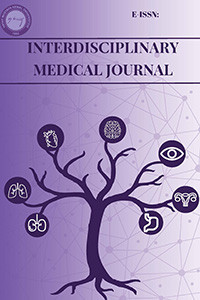Genetic and clinical characteristics of Turkish children with Maturity Onset Diabetes of the Young Type 2 (MODY2): A single center experience
Genetic and clinical characteristics of Turkish children with Maturity Onset Diabetes of the Young Type 2 (MODY2): A single center experience
Children, Maturity Onset Diabetes of Youth, Youth-Glucokinase, Next Generation Sequencing,
___
- Fajans SS, Bell GI. MODY: history, genetics, pathophysiology, and clinical decision making. Diabetes Care. 2011;34:1878–84. https://doi.org/10.2337/dc11-0035.
- Ledermann, H.M. Maturity-onset diabetes of the young (MODY) at least ten times more common in Europe than previously assumed? Diabetologia. 1995;38(12):1482. https://doi.org/10.1007/BF00400611.
- Kavvoura FK, Owen KR. Maturity onset diabetes of the young: clinical characteristics, diagnosis and management. Pediatr Endocrinol Rev. 2013;10(2):234–42.
- Hoffman LS, Jialal I. Diabetes, maturity onset in the young (MODY). In: StatPearls. Treasure Island: StatPearls Publishing; 2019. Available from: https://www.ncbi.nlm.nih.gov/books/NBK532900/.
- Kim SH. Maturity-onset diabetes of the young: what do clinicians need to know? Diabetes Metab J. 2015;39:468–77. https://doi.org/10.4093/dmj.2015.39.6.468
- Thanabalasingham G, Owen KR. Diagnosis and management of maturity onset diabetes of the young (MODY). Brit Med J 2011;343:d6044. https://doi.org/10.1136/bmj.d6044
- Osbak KK, Colclough K, Saint-Martin C, Beer NL, Bellanné-Chantelot C, Ellard S, et al. Update on mutations in glucokinase (GCK), which cause maturity-onset diabetes of the young, permanent neonatal diabetes, and hyperinsulinemic hypoglycemia. Hum Mutat. 2009;30:1512–26. https://doi.org/10.1002/humu.21110.
- Pearson ER, Boj SF, Steele AM, Barrett T, Stals K, Shield JP, et al. Macrosomia and hyperinsulinaemic hypoglycaemia in patients with heterozygous mutations in the HNF4A gene. PLoS Med 2007;4:e 118. https://doi.org/10.1371/journal.pmed.0040118.
- Tattersall RB, Fajans SS. A difference between the inheritance of classical juvenile-onset and maturity-onset type diabetes of young people. Diabetes. 1975;18(8):44–53. https://doi.org/10.2337/diab.24.1.44.
- Richards S, Aziz N, Bale S, Bick D, Das S, Gastier-Foster J, et al. Standards and guidelines for the interpretation of sequence variants: a joint consensus recommendation of the American College of Medical Genetics and Genomics and the Association for Molecular Pathology. Genet Med. 2015;17(5):405-24. https://doi.org/10.1038/gim.2015.30.
- Feigerlová E, Pruhová S, Dittertová L, Lebl J, Pinterová D, Kolostová K, et al. Aetiological heterogeneity of asymptomatic hyperglycaemia in children and adolescents. Eur J Pediatr. 2006;165:446–52. https://doi.org/10.1007/s00431-006-0106-3.
- Codner E, Rocha A, Deng L, Martínez-Aguayo A, Godoy C, Mericq V, et al. Mild fasting hyperglycemia in children: high rate of glucokinase mutations and some risk of developing Type 1 diabetes mellitus. Pediatr Diabetes. 2009;10:382–8. https://doi.org/10.1111/j.1399-5448.2009.00499.x.
- Froguel P, Zouali H, Vionnet N, Velho G, Vaxillaire M, Sun F, et al. Familial hyperglycemia due to mutations in glucokinase. Definition of a subtype of diabetes mellitus. N Engl J Med. 1993;328(10):697-702. https://doi.org/10.1056/NEJM199303113281005.
- Velho G, Blanché H, Vaxillaire M, Bellanné-Chantelot C, Pardini VC, Timsit J, et al. Identification of 14 new glucokinase mutations and description of the clinical profile of 42 MODY-2 families. Diabetologia. 1997;40(2):217-24. https://doi.org/10.1007/s001250050666.
- Costa A, Bescós M, Velho G, Chêvre J, Vidal J, Sesmilo G, et al. Genetic and clinical characterisation of maturity-onset diabetes of the young in Spanish families. Eur J Endocrinol. 2000;142(4):380-6. https://doi.org/10.1530/eje.0.1420380.
- Ağladıoğlu SY, Aycan Z, Çetinkaya S, Baş VN, Önder A, Peltek Kendirci HN, et al. Maturity onset diabetes of youth (MODY) in Turkish children: sequence analysis of 11 causative genes by next generation sequencing. J Pediatr Endocrinol Metab. 2016;29(4):487-96. https://doi.org/10.1515/jpem-2015-0039.
- Anık A, Çatlı G, Abacı A, Sarı E, Yeşilkaya E, Korkmaz HA, et al. Molecular diagnosis of maturity-onset diabetes of the young (MODY) in Turkish children by using targeted next-generation sequencing. J Pediatr Endocrinol Metab. 2015;28(11-12):1265-71. https://doi.org/10.1515/jpem-2014-0430.
- Aykut A, Karaca E, Onay H, Gökşen D, Çetinkalp Ş, Eren E, et al. Analysis of the GCK gene in 79 MODY type 2 patients: A multicenter Turkish study, mutation profile and description of twenty novel mutations. Gene. 2018;641:186-189. https://doi.org/10.1016/j.gene.2017.10.057.
- Human Gene Mutation Database at the Institute of Medical Genetics in Cardiff: GCK Gene: http://www.hgmd.cf.ac.uk
- Valentínová L, Beer NL, Staník J, Tribble ND, van de Bunt M, Hučková M, et al. Identification and functional characterisation of novel glucokinase mutations causing maturity-onset diabetes of the young in Slovakia. PLoS One. 2012;7(4):e34541. https://doi.org/10.1371/journal.pone.0034541.
- Gasperíková D, Tribble ND, Staník J, Hucková M, Misovicová N, van de Bunt M, et al. Identifcation of a novel beta-cell glucokinase [GCK] promoter mutation [- 71G.C] that modulates GCK gene expression through loss of allele-specific Spl binding causing mild fasting hyperglycemia in humans. Diabetes. 2009;58:1929-35.
- Bolu S, Eroz R, Dogan M, Arslanoglu I, Dundar I. Genotype-Phenotype Characteristics of Turkish Children With Glucokinase Mutations Associated Maturity-Onset Diabetes of the Young. Indian Pediatr. 2020;57(11):1037-1039.
- Craig ME, Jefferies C, Dabelea D, Balde N, Seth A, Donaghue KC. International Society for Pediatric and Adolescent Diabetes. ISPAD clinical practice consensus guidelines 2014. Definition, epidemiology, and classification of diabetes in children and adolescents. Pediatr Diabetes. 2014; 15(S20):4–17. https://doi.org/10.1111/pedi.12186.
- Wei X, Ju X, Yi X, Zhu Q, Qu N, Liu T, et al. Identification of sequence variants in genetic disease-causing genes using targeted next-generation sequencing. PLoS One. 2011;6(12):e29500. https://doi.org/10.1371/journal.pone.002950
- Yayın Aralığı: 3
- Başlangıç: 2023
- Yayıncı: Hatay Mustafa Kemal Üniversitesi Tıp Fakültesi Dekanlığı
The role of surgery in perianal disease developing in hematology malignancy patients
Serkan ERKAN, Ramazan GÜNDOĞDU, Murat KUŞ, Hakan YABANOĞLU
Evaluation of serum adipocytokine and interleukin-18 levels in patients with epilepsy
Ahmet DÜNDAR, Derya KILINÇ, Ahmet YILMAZ, Vugar JAFAR, Orhan AYAN, Mehmet Uğur ÇEVİK, Hamza ASLANHAN
Hacer DEMİRKÖSE, Furkan AKYÜZ, Mehmet Enes GÖKLER
Ömer Faruk TEKİN, Müberra ÇAKICI TOSUN
Mehmet Cenk BELİBAĞLI, Nilüfer AYGÜN BİLECİK
The effect of Covid-19 anxiety on prenatal distress and prenatal attachment in pregnant women
Dilay KARADEMİR, Ezgi AĞADAYI, Seher KARAHAN
Hatice Mine ÇAKMAK, Kenan KOCABAY
Özlem NALBANTOĞLU, Semra GÜRSOY, Tarık KIRKGÖZ, Filiz HAZAN, Behzat ÖZKAN
Monocyte eosinophil ratio and red blood cell distribution width in the diagnosis of asthma
Breast cancer and the molecular mechanism of estrogen signaling
